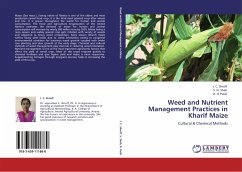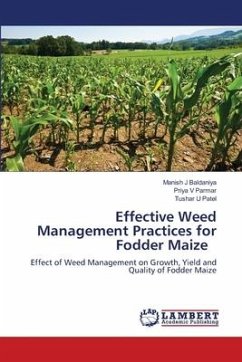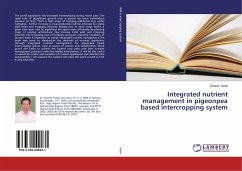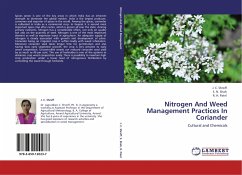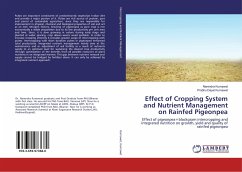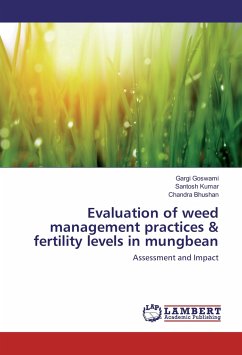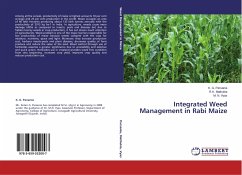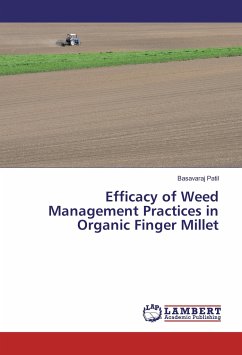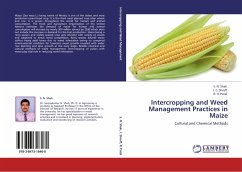
Intercropping and Weed Management Practices in Maize
Cultural and Chemical Methods
Versandkostenfrei!
Versandfertig in 6-10 Tagen
52,99 €
inkl. MwSt.

PAYBACK Punkte
26 °P sammeln!
Maize (Zea mays L.) being native of Mexico is one of the oldest and most productive cereal food crop. It is the third most planted crop after wheat and rice. It is grown throughout the world for human and animal consumption. The Food and Agriculture Organization of the United Nations estimates the demand of maize for human and animal consumption will increase by nearly 300 million tonnes by 2030 which does not include the increase in demand for bio-fuel production. Maize being a rainy season and widely spaced crop gets infested with variety of weeds and subjected to heavy weed competition. Rai...
Maize (Zea mays L.) being native of Mexico is one of the oldest and most productive cereal food crop. It is the third most planted crop after wheat and rice. It is grown throughout the world for human and animal consumption. The Food and Agriculture Organization of the United Nations estimates the demand of maize for human and animal consumption will increase by nearly 300 million tonnes by 2030 which does not include the increase in demand for bio-fuel production. Maize being a rainy season and widely spaced crop gets infested with variety of weeds and subjected to heavy weed competition. Rainy season (kharif) maize suffers heavy yield losses due to weed infestation owing to congenial environmental condition for luxurious weed growth coupled with wider row planting and slow growth at the early stage. Besides chemical and cultural methods of weed management, intercropping of pulses with maize play vital role in reducing weed infestation.



